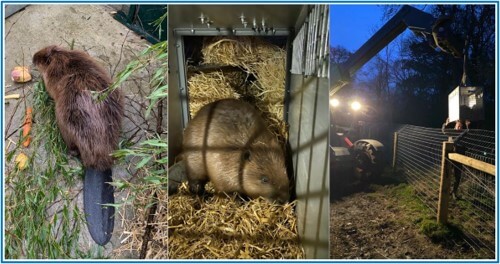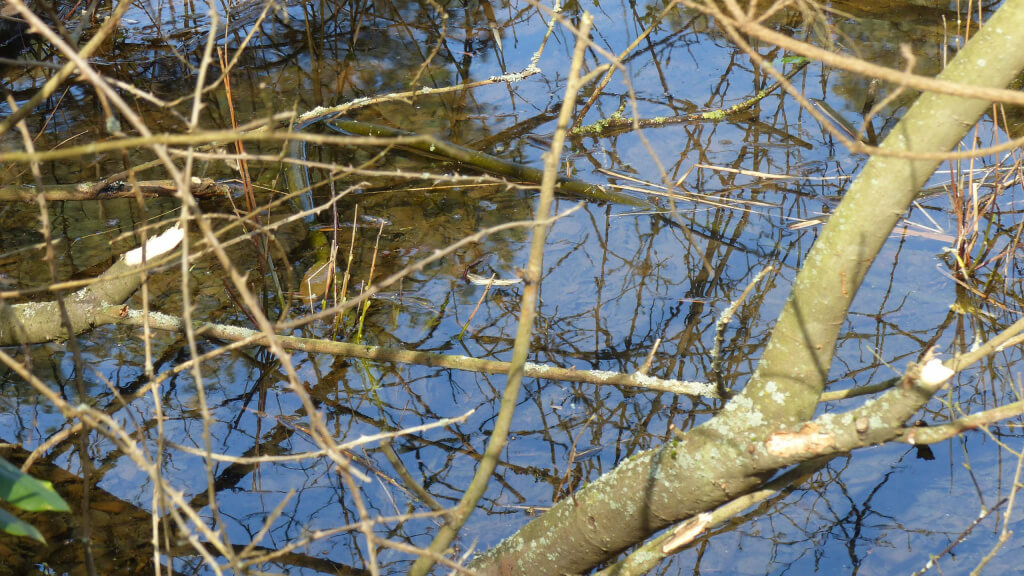


The last month or so has been exceptionally busy and hectic for everyone, as we restructure our lives to endure the impact of Covid-19, look after loved ones, and fight the virus. Covid-19 has also impacted our plans, curtailing the trapping window for wild beavers in Scotland, and delaying us from releasing two complete pairs of beavers as initially planned.
Both females are young adults and have not bred before. The two females are unrelated, and were released into different areas of the enclosure. The enclosure is over 50 acres, which we believe to be the largest in England. This should allow both beavers to build up separate territories and not cause one another any grief (beavers can be quite vicious!)

We released them at dusk after they traveled down from Scotland. There were some efforts carefully lowering the beavers in their crates into the enclosure. We opened the crates and they both squirreled away into the ponds and watery channels that sit within the enclosure.
In the first few days, clear signs of feeding suggested both beavers were settling into their new surroundings and reassuring us that they were in good health.

Eurasian beavers are famously elusive. They are in fact mostly nocturnal, also appearing at dawn and dusk. And they much prefer to be in the water, where they can more easily escape predators.
We installed numerous camera traps and have been visiting the enclosure regularly to see if we could catch a glimpse of our new residents going about their work, or evidence of any damming and digging.

Lo and behold, we caught some footage of our new residents! Some of the best shots are included below – but you can head over to our Instagram page for the full video clips! In particular, we have seen one of the females felling and moving wood over an old sluice into a downstream part of the enclosure, where we think she is building a new dam or lodge. Beavers dam flowing water to create larger pools and wet areas. This allows them to access food from the comfort of the water, and protects them better from predators.


We are chuffed to see that the beavers have settled in well to their new environment. We want to say a huge thank you for those involved in the delivery of this conservation work: particularly Natural England for support in funding the enclosure, Five Sisters Zoo in Scotland for carefully looking after the beavers during captivity, and to Derek Gow and Roisin Campbell-Palmer for their help and support during the entire process.
We hope they will each join the females to create two pairs that will breed. We will trap and release the two additional males when the trapping season reopens in August, and once the virus is under control and lockdown measures are reduced in severity. These males will be trapped under the Scottish Natural Heritage Beaver Mitigation scheme by Roisin, before being transferred to Five Sisters Zoo for full health screening according to DEFRA recommendations. This is a collaborative process working to support the farming community should beavers cause conflicts in agricultural ditches. A number of beavers have now been successfully relocated to restoration projects in England so we are incredibly proud to support this process and be a vital part in promoting the restoration of this lost native mammal, with all the biodiversity benefits they bring.
We will keep you updated on how the two beavers are getting on and the impact they are having on the ecology at Wild Ken Hill. For more frequent updates, you can follow us on Instagram